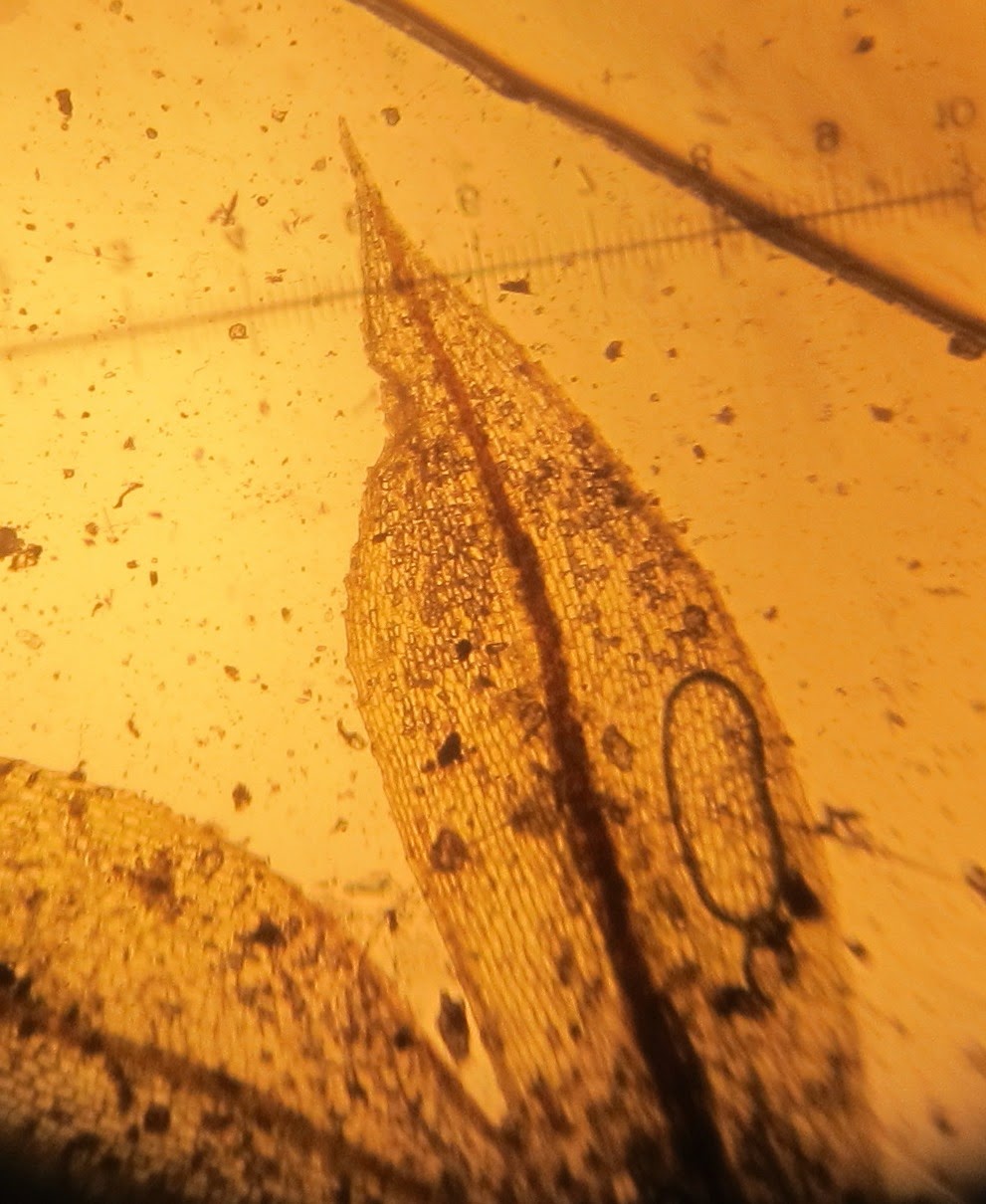In 2012 I published a note in Journal of Bryology reporting Entosthodon mouretii as new for Britain, based on 7 records from the southern half of the country. I initially tried to reduce mouretii to variety status, but one of the journal referees insisted that I could not do that without studying the Type (in Paris), many southern European specimens etc. I wanted to reduce it to variety status because so many of the British specimens were markedly intermediate, with no obvious discontinuity in the key character states of costa length, leaf acuminateness, and marginal tooth sharpness. The 7 British records had convincingly excurrent costae, but others had the costa ending 1-5 cells below the apex.
Today I found a substantial fruiting population of E. fascicularis on a roadside bank in Cross Hands Industrial Estate. Most of its leaves had very long costae, ranging from excurrent by 1 cell to finishing 2 cells below the apex. It isn't quite extreme enough to be E. mouretii, but it certainly isn't classic short-nerved E. fascicularis. I am ever more unconvinced at the validity of this taxon as a species, but don't have the time or inclination to shoot it down globally.


Wow, that really is a subtle taxon and one I've never heard of. I'll certainly check any specimens I come across.
ReplyDelete